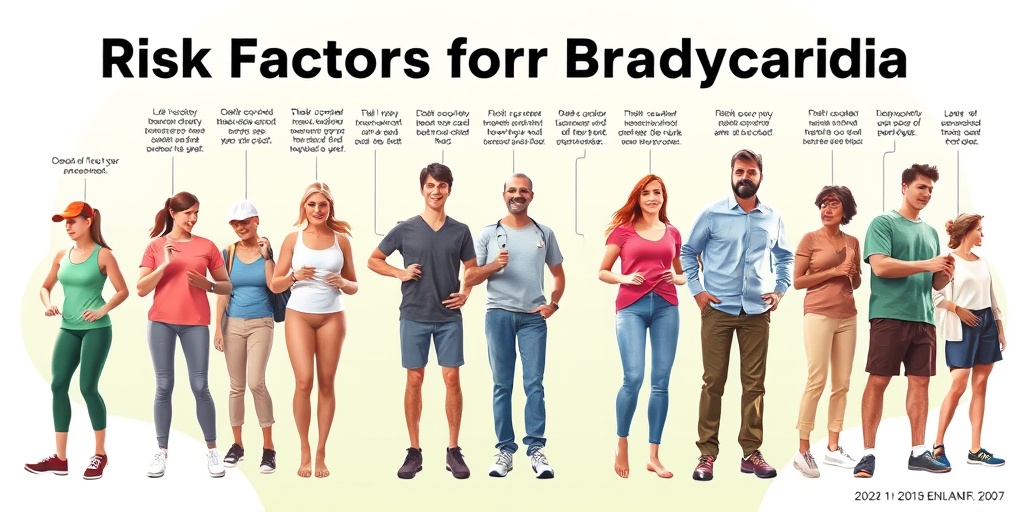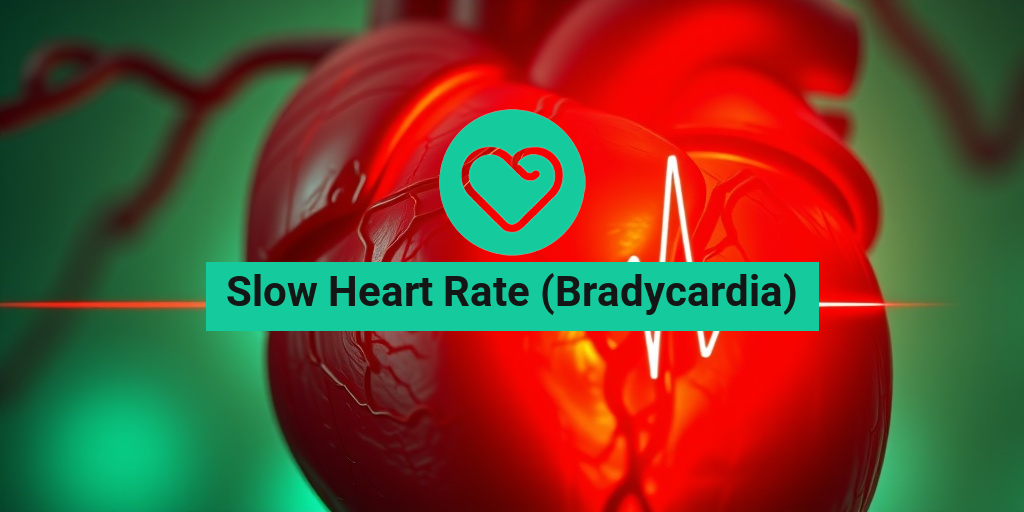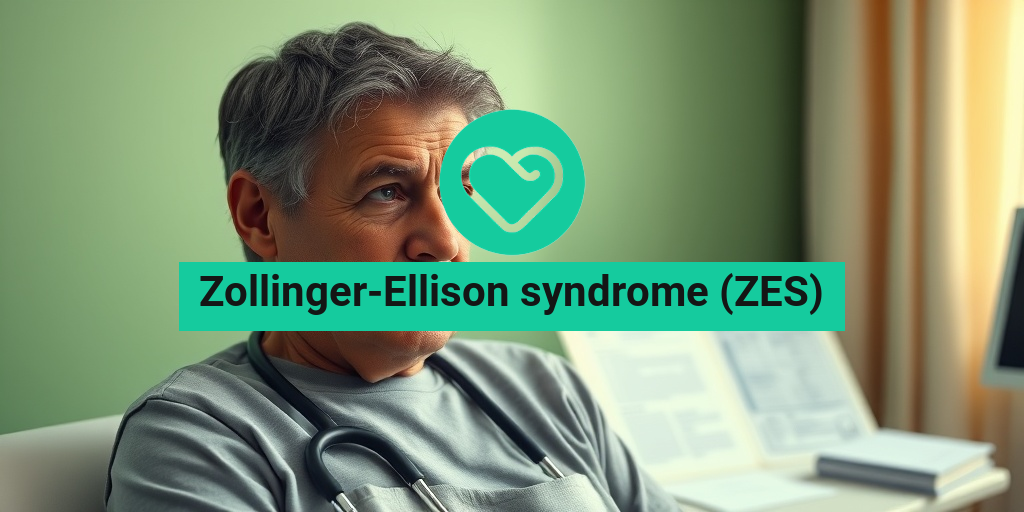What Is Bradycardia?
Bradycardia, commonly referred to as a slow heart rate, is a medical condition characterized by a heart rate that is less than 60 beats per minute. While a normal resting heart rate for adults typically ranges from 60 to 100 beats per minute, bradycardia can occur in healthy individuals, particularly athletes, as well as in those with underlying health issues.
Understanding Heart Rate
The heart rate is a vital sign that reflects how well the heart is functioning. It can be influenced by various factors, including:
- Age: Heart rates tend to slow down as we age.
- Fitness Level: Athletes often have lower resting heart rates due to their high level of cardiovascular fitness.
- Medications: Certain medications, especially those used to treat heart conditions, can lead to a slower heart rate.
- Medical Conditions: Conditions such as hypothyroidism, heart block, or other cardiac issues can also cause bradycardia.
Bradycardia can be classified into two main types: sinus bradycardia and heart block. Sinus bradycardia occurs when the heart’s natural pacemaker (the sinus node) sends signals at a slower rate. Heart block, on the other hand, involves a disruption in the electrical signals that control the heartbeat.
Causes of Bradycardia
Several factors can contribute to a slow heart rate, including:
- Heart Conditions: Damage to the heart from a heart attack or other conditions can affect the heart’s electrical system.
- Electrolyte Imbalances: Low levels of potassium or calcium can disrupt the heart’s rhythm.
- Inflammation: Conditions like myocarditis can lead to bradycardia.
- Congenital Heart Defects: Some individuals are born with heart defects that affect their heart rate.
Understanding the underlying cause of bradycardia is crucial for determining the appropriate treatment and management strategies.
Bradycardia Symptoms
Many individuals with bradycardia may not experience noticeable symptoms, especially if their heart rate is only slightly below normal. However, when symptoms do occur, they can range from mild to severe and may include:
Common Symptoms
- Fatigue: Feeling unusually tired or weak can be a sign of bradycardia.
- Dizziness or Lightheadedness: A slow heart rate can lead to reduced blood flow to the brain, causing dizziness.
- Fainting (Syncope): In some cases, bradycardia can cause fainting spells due to inadequate blood flow.
- Shortness of Breath: Difficulty breathing, especially during physical activity, may occur.
- Chest Pain: Some individuals may experience discomfort or pain in the chest.
When to Seek Medical Attention
If you or someone you know is experiencing symptoms of bradycardia, it is essential to seek medical attention promptly. Symptoms like fainting, severe dizziness, or chest pain should be treated as emergencies. A healthcare professional can perform tests to determine the cause of the slow heart rate and recommend appropriate treatment options.
Conclusion
Bradycardia, or a slow heart rate, can be a benign condition in some individuals, particularly athletes. However, it can also indicate underlying health issues that require attention. If you suspect you have bradycardia or are experiencing related symptoms, consider consulting a healthcare provider for a thorough evaluation. For more evidence-based health answers, visit Yesil Health AI for reliable information.
Understanding your heart health is crucial, and being aware of conditions like bradycardia can empower you to take charge of your well-being. ❤️

Causes of Slow Heart Rate (Bradycardia)
A slow heart rate, medically known as bradycardia, occurs when the heart beats fewer than 60 times per minute. While some individuals may naturally have a low heart rate, especially athletes, bradycardia can also indicate underlying health issues. Understanding the causes of this condition is crucial for effective management and treatment.
1. Heart-Related Conditions
Several heart-related issues can lead to bradycardia, including:
- Coronary Artery Disease: This condition narrows the arteries, reducing blood flow to the heart and potentially affecting its rhythm.
- Heart Block: This occurs when the electrical signals that control heartbeats are partially or completely blocked, leading to a slower heart rate.
- Myocarditis: Inflammation of the heart muscle can disrupt normal heart function and lead to bradycardia.
2. Age-Related Changes
As we age, the heart’s electrical system may undergo changes, leading to a slower heart rate. This is often a natural part of aging but can also be exacerbated by other health conditions.
3. Medications
Certain medications can cause bradycardia as a side effect. Common culprits include:
- Beta-blockers: Often prescribed for high blood pressure and heart conditions, these can slow the heart rate.
- Calcium Channel Blockers: Used to treat high blood pressure and angina, they can also lead to a reduced heart rate.
- Digoxin: This medication, used for heart failure and arrhythmias, can slow the heart rate significantly.
4. Electrolyte Imbalances
Electrolytes, such as potassium and calcium, play a vital role in maintaining the heart’s electrical activity. An imbalance in these minerals can lead to bradycardia. For example, high potassium levels (hyperkalemia) can disrupt the heart’s rhythm.
5. Hypothyroidism
A condition where the thyroid gland does not produce enough hormones can lead to a slower metabolism and, consequently, a lower heart rate. Individuals with hypothyroidism may experience other symptoms, such as fatigue and weight gain.
6. Sleep Apnea
Sleep apnea, a condition characterized by interrupted breathing during sleep, can lead to bradycardia. The repeated drops in oxygen levels can affect heart rate and rhythm, making it essential to address this condition.
Risk Factors for Bradycardia
Understanding the risk factors associated with low heart rate bradycardia can help in early detection and management. Here are some key factors to consider:
1. Age
Bradycardia is more common in older adults due to age-related changes in the heart’s electrical system. As the body ages, the risk of developing heart conditions that can lead to bradycardia increases.
2. Heart Disease
Individuals with a history of heart disease, including coronary artery disease or previous heart attacks, are at a higher risk for developing bradycardia. These conditions can damage the heart’s electrical pathways, leading to slower heart rates.
3. Family History
A family history of heart conditions can increase the likelihood of developing bradycardia. Genetic factors may play a role in how the heart functions and responds to stressors.
4. Certain Medical Conditions
Conditions such as diabetes, hypothyroidism, and sleep apnea can contribute to the development of bradycardia. Managing these conditions effectively is crucial for maintaining a healthy heart rate.
5. Lifestyle Factors
Unhealthy lifestyle choices, such as a sedentary lifestyle, poor diet, and smoking, can increase the risk of heart disease and, consequently, bradycardia. Adopting a heart-healthy lifestyle can help mitigate these risks.
6. Medications
As mentioned earlier, certain medications can lead to bradycardia. It’s essential for individuals taking these medications to be aware of potential side effects and discuss any concerns with their healthcare provider.
In conclusion, understanding the causes and risk factors of slow heart rate (bradycardia) is vital for early detection and management. If you or someone you know is experiencing symptoms of bradycardia, such as fatigue, dizziness, or fainting, it is important to seek medical advice promptly. 🩺❤️

Bradycardia Diagnosis
Diagnosing slow heart rate (bradycardia) involves a combination of medical history, physical examinations, and specific tests. Understanding how healthcare professionals diagnose this condition is crucial for effective management and treatment.
Medical History and Symptoms
The first step in diagnosing bradycardia is a thorough review of your medical history. Your doctor will ask about:
- Your symptoms: Common symptoms of bradycardia include fatigue, dizziness, fainting, and shortness of breath.
- Medications: Certain medications, especially those affecting heart rate, can contribute to a slow heart rate.
- Existing health conditions: Conditions such as hypothyroidism, heart disease, or electrolyte imbalances may play a role.
Physical Examination
During a physical exam, your doctor will check your pulse and blood pressure. A low resting heart rate may be detected, prompting further investigation. They may also listen to your heart for any irregularities.
Electrocardiogram (ECG)
An electrocardiogram (ECG) is a key diagnostic tool for bradycardia. This test records the electrical activity of your heart and can help identify:
- The heart’s rhythm and rate
- Any abnormalities in heart function
- Specific types of bradycardia, such as sinus bradycardia
Holter Monitor
If your doctor suspects intermittent bradycardia, they may recommend a Holter monitor. This portable device records your heart’s activity over 24 to 48 hours, providing a comprehensive view of your heart rate patterns.
Other Diagnostic Tests
In some cases, additional tests may be necessary, including:
- Exercise stress test: This test monitors your heart rate during physical activity.
- Electrophysiological study: This invasive test helps identify the source of abnormal heart rhythms.
Once diagnosed, understanding the underlying cause of your bradycardia is essential for determining the appropriate treatment plan. 🩺
Complications of Bradycardia
While bradycardia itself may not always be serious, it can lead to various complications if left untreated. Recognizing these potential issues is vital for maintaining heart health.
Fainting and Dizziness
One of the most immediate complications of a low heart rate is the risk of fainting or dizziness. When the heart beats too slowly, it may not pump enough blood to the brain, leading to:
- Lightheadedness
- Loss of consciousness
Heart Failure
In severe cases, bradycardia can contribute to heart failure. This occurs when the heart cannot pump blood effectively, leading to symptoms such as:
- Shortness of breath
- Swelling in the legs and ankles
- Fatigue
Cardiac Arrest
Although rare, extreme bradycardia can lead to cardiac arrest, a life-threatening condition where the heart stops beating. This requires immediate medical attention and intervention. 🚑
Increased Risk of Other Heart Conditions
Bradycardia may also increase the risk of developing other heart-related issues, such as:
- Arrhythmias: Irregular heartbeats that can lead to complications.
- Coronary artery disease: Reduced blood flow to the heart muscle.
Impact on Quality of Life
Living with bradycardia can significantly affect your quality of life. Symptoms like fatigue and dizziness can limit daily activities and overall well-being. It’s essential to work closely with your healthcare provider to manage the condition effectively.
In summary, while bradycardia can be a manageable condition, understanding its diagnosis and potential complications is crucial for maintaining heart health and preventing serious outcomes. 💓

Bradycardia Treatment Options
Bradycardia, or a slow heart rate, is defined as a heart rate of fewer than 60 beats per minute. While it can be a normal finding in some individuals, especially athletes, it can also indicate underlying health issues. Understanding the treatment options available is crucial for managing this condition effectively.
When is Treatment Necessary?
Not everyone with a low heart rate requires treatment. The need for intervention typically arises when bradycardia leads to symptoms such as:
- Dizziness or lightheadedness
- Fatigue
- Shortness of breath
- Chest pain
- Fainting spells
If you experience any of these symptoms, it’s essential to consult a healthcare professional for a thorough evaluation.
Medical Treatments for Bradycardia
Depending on the underlying cause of your slow heart rate, various treatment options may be recommended:
- Medications: Certain medications can help manage bradycardia. For instance, if bradycardia is caused by a medication you are taking, your doctor may adjust the dosage or switch you to a different drug.
- Pacing Devices: In cases where bradycardia is severe or symptomatic, a pacemaker may be implanted. This small device helps regulate the heart’s rhythm by sending electrical signals to prompt the heart to beat at a normal rate.
- Addressing Underlying Conditions: If bradycardia is due to an underlying condition, such as hypothyroidism or sleep apnea, treating that condition may alleviate the slow heart rate.
Lifestyle Changes to Consider
In addition to medical treatments, certain lifestyle changes can also help manage bradycardia:
- Regular Exercise: Engaging in regular physical activity can improve overall heart health. However, consult your doctor before starting any new exercise regimen.
- Avoiding Stimulants: Reducing caffeine and alcohol intake may help stabilize your heart rate.
- Staying Hydrated: Proper hydration is essential for maintaining a healthy heart rate.
Living with Bradycardia
Living with bradycardia can be challenging, especially if it leads to symptoms that affect your daily life. However, with the right management strategies, many individuals can lead normal, active lives.
Monitoring Your Heart Rate
Regularly monitoring your heart rate can help you stay informed about your condition. You can do this by:
- Using a heart rate monitor or smartwatch
- Keeping a journal of your heart rate readings and any symptoms you experience
Sharing this information with your healthcare provider can help them make informed decisions about your treatment plan.
Recognizing Symptoms
Being aware of the symptoms associated with low heart rate bradycardia is crucial. If you notice any changes, such as increased fatigue or dizziness, it’s important to seek medical advice promptly. Early intervention can prevent complications and improve your quality of life.
Support and Resources
Living with bradycardia can sometimes feel isolating. Connecting with support groups or online communities can provide valuable resources and emotional support. Consider reaching out to:
- Local heart health organizations
- Online forums dedicated to heart health
- Support groups for individuals with bradycardia
Additionally, educating yourself about bradycardia can empower you to make informed decisions about your health. Resources such as books, reputable websites, and healthcare professionals can provide valuable insights.
Maintaining a Healthy Lifestyle
Incorporating healthy habits into your daily routine can significantly impact your overall well-being. Focus on:
- Balanced Diet: Eating a heart-healthy diet rich in fruits, vegetables, whole grains, and lean proteins can support cardiovascular health.
- Stress Management: Techniques such as yoga, meditation, and deep breathing exercises can help reduce stress, which may positively influence your heart rate.
- Regular Check-ups: Regular visits to your healthcare provider can help monitor your condition and adjust treatment as necessary.
By understanding your condition and actively participating in your care, you can effectively manage bradycardia and maintain a fulfilling lifestyle. Remember, you are not alone in this journey! 💖

Frequently Asked Questions about Slow Heart Rate (Bradycardia)
What is Slow Heart Rate (Bradycardia)?
Slow heart rate, medically known as bradycardia, refers to a heart rate that is slower than normal, typically defined as fewer than 60 beats per minute. This condition can occur in healthy individuals, particularly athletes, but may also indicate underlying health issues.
What causes a low heart rate (bradycardia)?
Bradycardia can be caused by various factors, including:
- Heart tissue damage from aging or heart disease
- Electrolyte imbalances
- Medications that affect heart rate
- Hypothyroidism
- Sleep apnea
How is low heart rate (bradycardia) diagnosed?
Diagnosis typically involves a physical examination and may include:
- Electrocardiogram (ECG or EKG)
- Holter monitor to track heart rate over 24 hours
- Blood tests to check for underlying conditions
What are the symptoms of bradycardia?
Some individuals with bradycardia may not experience symptoms, while others may report:
- Dizziness or lightheadedness
- Fatigue
- Shortness of breath
- Fainting or near-fainting episodes
How is low heart rate (bradycardia) treated?
Treatment for bradycardia depends on the underlying cause. Options may include:
- Adjusting or changing medications
- Treating underlying health conditions
- In severe cases, a pacemaker may be recommended to regulate heart rate
Can bradycardia be dangerous?
While bradycardia can be harmless in some individuals, it can lead to serious complications if it results in insufficient blood flow to the body. Symptoms like fainting or severe fatigue should prompt immediate medical attention.
When should I see a doctor about my slow heart rate?
If you experience symptoms such as dizziness, fatigue, or fainting, or if you have concerns about your heart rate, it’s important to consult a healthcare professional for evaluation and guidance.
Is a low resting heart rate always a sign of bradycardia?
No, a low resting heart rate is not always indicative of bradycardia. Athletes, for example, often have lower resting heart rates due to their high level of fitness. It’s essential to consider other symptoms and consult a healthcare provider for a proper diagnosis.
Can lifestyle changes help manage bradycardia?
Yes, lifestyle changes such as maintaining a healthy diet, engaging in regular exercise, and managing stress can support heart health. However, these changes should be discussed with a healthcare provider, especially if you have bradycardia.




